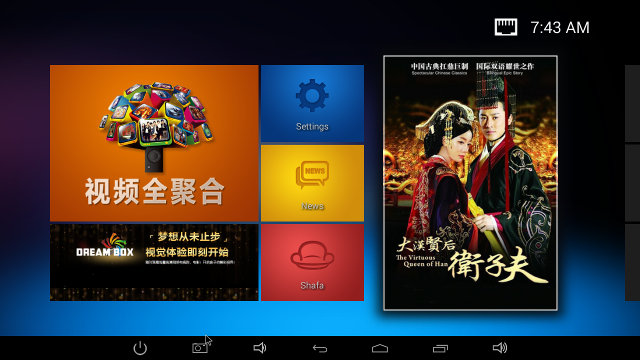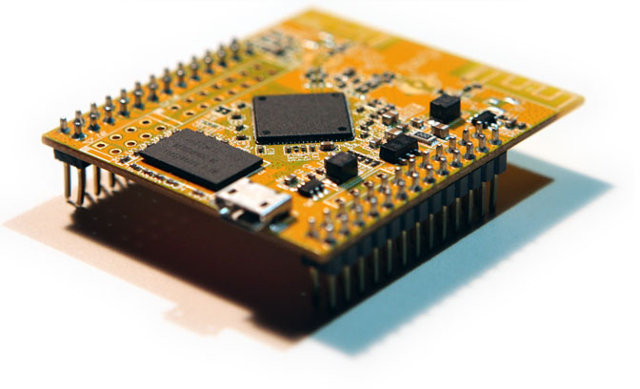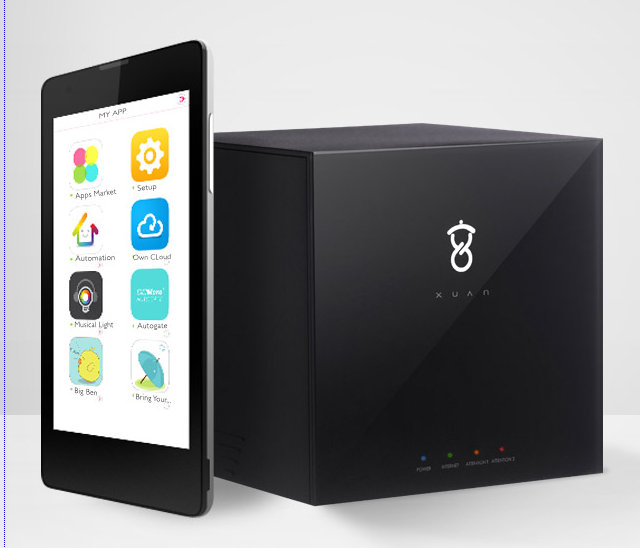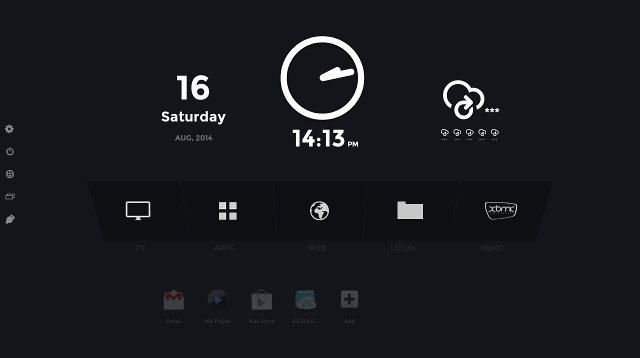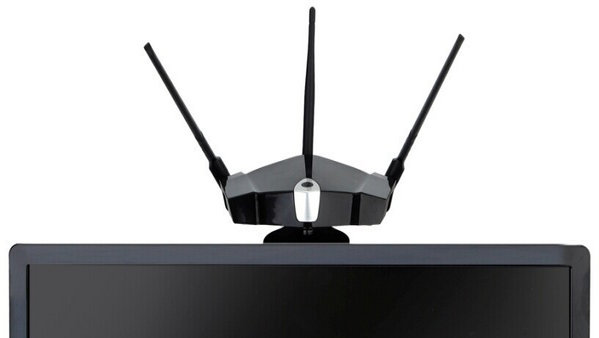UyeSee G1H is one of the first Android TV boxes powered by Rockchip RK3288 quad core Cortex A17 SoC. I’ve already listed specs, and shown a few pictures of the device and the board in my “UyeSee G1H Unboxing” post, so today I’ll write a full review, checking out the user interface, testing video playback capabilities, network and storage performance, play a few games, check hardware features are working as expected, and runs some benchmarks on the platform. First Boot, Settings and First Impressions There’s an infrared remote control with the device. I’ve inserted a CR2032 battery, and although it works great in the user interface, it becomes useless with Android apps, so instead I’ve opted to use Mele F10 Deluxe air mouse which brings mouse and keyboard support. Before powering up the device, I’ve connected an HDMI cable, the RF dongle for Mele F10 Deluxe, a USB hard drive, […]
$25 GL.iNet 6416A is an Hackable OpenWRT Router with Easy UART and GPIO Access
There are plenty of low cost routers supporting OpenWRT, but GL.iNet 6416A has several advantages compared to devices like TP-Link WR703N. Both are based on Atheros AR9931, but GL.iNet router has more memory and storage (64MB RAM + 16MB Flash vs 32MB RAM + 4MB Flash), two Ethernet ports instead of just one, and 6 GPIOs, the serial pins, and power signals (5V, 3.3V and GND) are all easily accessible via though holes or headers. Gl.iNet 6416A can be purchased for about $25 on DealExtreme or Amazon US, and it used to be listed on eBay, but is now out of stock. Gl/iNET 6416A specifications: Wi-Fi SoC – Atheros AR9331 MIPS processor @ 400 MHz System Memory – 64MB RAM Storage – 16MB Flash Connectivity – 2x 10/100 Mbit Ethernet ports, 802.11 b/g/n Wi-FI up to 150Mbps USB – 1x USB 2.0 port, 1x micro USB port for power Debugging […]
WRTNode is a Hacker-Friendly Open Source Hardware OpenWRT Wi-Fi Module Selling for $25
There are now some tiny and low cost ($15 to $20) Wi-Fi modules supporting OpenWRT such as VoCore and AsiaRF AWM002. However due to their small size they may not be that hacker’s friendly as they can’t have 2.54mm headers due to heir small size, and I’ve recently received AsiaRF AWM002 only to find out it not only needs 3.3V supply voltage, but also 1.8V and 1.2V. So I’d need to make my own power circuit with the required LDOs, or purchase a $20 base board to use the module. Here comes WRTnode another larger Wi-Fi module but with more usable 2.54mm headers, and based on the more powerful Mediatek MT7620N processor @ 600MHz. WRTnode hardware specifications: Processor – Mediatek MT7620N 600MHz MIPS CPU (MIPS24KEc) System Memory – 64MB DDR2 Storage – 16MB SPI flash Connectivity – Wi-Fi 2T2R 802.11n 2.4 GHz up to 300Mbps Expansion Headers – 2x with […]
$79 STACK Box Home Automation / IoT Gateway Supports Wi-Fi, Ethernet, BLE, XBee, X10, Z-Wave and More (Crowdfunding)
Cloud Media (Syabas) is better known for their Linux based “Popcorn Hour” media players, and last year I reviewed their FreeOTT streaming media player powered by a Cavium ARM11 processor. The company is now entering the home automation market with the STACK Box (aka XuanBox) also powered by a Cavium ARM11 processor, and supporting various connectivity options to interface with popular smart “things” such as Belkin Wemo and Philips Hue, as well as a Raspberry Pi Bus (26-pin header) to support add-ons. STACK Box specifications: Processor – Cavium ARM11 processor @ 640 MHz (possibly Cavium CELESTIAL CNC1800L. TBC) System Memory – 256MB DDR3 Storage – 512 MB flash + SD card slot Connectivity 10/100M Ethernet Wi-Fi 802.11n with WPS Bluetooth LE 4.0 (included) Z-Wave (included) Dust Networks (extra module required) XBee (extra module required) X10 (extra module required) Insteon (extra module required) RF433/315 (coming soon) EnOcean (coming soon) ZigBee(coming soon) DCLink(coming […]
Review of WeTek Play Android DVB-S2 Satellite Receiver
[Update, December 29, 2014: You may want to read the updated WeTek Play Review with newer firmware including IPTV services, and bug fixes] I’ve already posted pictures of WeTek Play and its boards, and now it’s time to do a full review of this Android DVB-S2 receiver / media player. I’ll start by giving my first impressions, going through the system settings, testing my library of video test files, as well as DVB-S2 support via WeTek Theater, and check most of hardware features. I’ll also test network and storage performance, before running Antutu benchmark to make sure the device runs at optimal speed. First Boot, Settings and First Impressions Contrary to the vast majority of devices, WeTek Play does not come with a basically useless infrared remote, but instead an RF air mouse with an IR transmitter in order to provide true power ON/OFF capabilities. The remote is very nice […]
littleBits CloudBit Wi-Fi Module Simplifies DIY IoT Designs
littleBits Electronics is a company selling tiny modules that snap together with tiny magnets for prototyping called… littleBits. They do not require soldering, wiring, or programming, can be buttons, sensors, motors, etc…, and are the electronics equivalent of LEGO, and are suitable to 8 years old and older kids. The company have recently launched a new product called CloudBit, a module based on Freescale i.MX233 with Wi-Fi connectivity meant to be used/snapped with existing littleBits. CloudBit hardware specifications: Processor – Freescale i.MX233 ARM926EJ-S processor @ 454MHz System Memory – 64MB of RAM; Storage – microSD slot with included 4GB micro SD card pre-loaded with a customized Arch Linux ARM distribution Connectivity – 802.11b/g Wi-Fi via included USB dongle USB – micro USB port (for power only) Connectors – 2x BitSnap connectors for LittleBits connectivity using i.MX233 ADC/DAC signals Debugging – Pads for UART (3.3V, 8-N-1, 115,200 baud) to access the […]
Skytecx SK-R68b Android TV Box Comes with Three Wi-Fi Antennas
There’s now a pretty long list of Android media players powered by Rockchip RK3288, and they keep coming up. While I don’t cover most of them, Skytecx SK-R68b is a little more interesting because for some reasons, the manufacturer has decided to go with not only two, but three Wi-Fi antennas, and the product is the type that you place directly on top of your TV. The rest of the specifications looks pretty standard: SoC – Rockchip RK3288 quad core CortexA17 @ 1.8 GHz with ARM Mali-T764 GPU System Memory – 2GB DDR3 Storage – 8 to 32GB NAND flash (8GB by default) + micro SD card slot (up to 32 GB) Connectivity – Gigabit Ethernet, dual band WiFi 802.11 b/g/n (2.4GHz/5GHz) and 802.11 a/c with triple Wi-Fi antennas, and Bluetooth 4.0 Video & Audio Output – HDMI 2.0 output (female) up to 1080p (sic), AV output (3.5mm jack) Video Codecs […]
ARM TechCon 2014 Schedule – 64-Bit, IoT, Optimization & Debugging, Security and More
ARM Technology Conference (TechCon) 2014 will take place on October 1 – 3, 2014, in Santa Clara, and as every year, there will be a conference with various sessions for suitable engineers and managers, as well as an exposition where companies showcase their latest ARM based products and solutions. The detailed schedule for the conference has just been made available. Last year, there were 90 sessions organized into 15 tracks, but this year, despite received 300 applications, the organizers decided to scale it down a bit, and there will be 75 session in the following 11 tracks: Chip Implementation Debugging Graphics Heterogeneous Compute New Frontiers Power Efficiency Safety and Security Software Development and Optimization Software Optimization for Infrastructure and Cloud System Design Verification There are also some paid workshops that take all day with topics such as “Android (NDK) and ARM overview”, “ARM and the Internet of Things”, or “ARM […]


